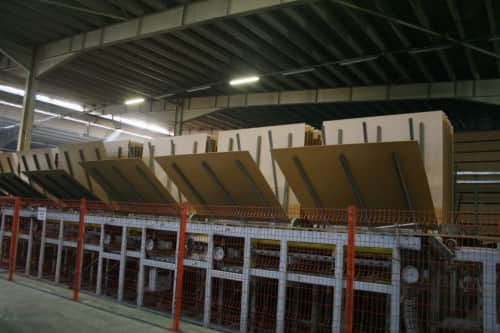
Pöyry’s Warning For The European Wood Based Panel Industry
Pöyry Management Consulting has recently issued a warning about the 10 million m3 of additional panel capacity planned by the European wood panel industry, questioning whether it is being built in the right place, at the right time or even to produce the right products.
Pöyry’s new report, “The Future of the Wood Based Panels Industry in Europe” predicts that European demand for panels will grow by 3% per annum to 2020 under a “Central” demand scenario. However, growth could be as low as 1% per annum under a “Stagnant” scenario or as high as 5% per annum under a “Dynamic” scenario. Furthermore, the shift in demand from Western Europe to Eastern Europe will continue with 55% of all wood based panels being consumed in Eastern Europe by 2020 compared to 49% at present. Between 2007 and 2012 the average return on invested capital achieved by the European panel industry was 5%, which is well below the risk-adjusted return required by financial markets. Industry profitability will improve if Pöyry’s Central or Dynamic demand scenario prevail, but with very big differences between the worst and best performers. Pöyry’s Operational Excellence practice has identified average savings opportunities of 20 EUR/m3 across a wide range of European panel mills.
Dr Cormac O’Carroll, Global Head of Pöyry’s Wood Products Practice said: “Our new market model, Zeno* has identified a mismatch between industry investment plans and market requirements which will lead to declining prices for some panels and markets but rising prices for others. Whilst the planned new investments all make economic sense individually, generating at least 9% IRR, their overall impact will be to reduce industry profitability.” Dr. O’Carroll also added, “The continued expansion of the bio energy sector is another potential threat to the European panel industry. As EU countries strive to reach their 2020 renewable energy targets, significant wood shortages for wood based panel production in some Western European markets may emerge.”
Here’s a closer look at Pöyry’s scenarios:
- The geographic distribution of planned new capacity for particleboard is not optimal from an industry perspective. It would be better if announced and on-going replacement investments in Germany were to result in a lower net capacity for the region. Pöyry’s Central and Stagnant demand scenarios predict periods of overcapacity and depressed pricing in some regions.
- Planned investment in new MDF capacity is roughly in line with what is economically feasible under Pöyry’s Stagnant demand scenario for Europe, so there will be room for further new capacity if demand growth moves towards the Central or Dynamic scenarios.
- The location and timing of the announced new capacity investments for OSB are economically feasible only under Zeno’s Dynamic demand scenario. If all the planned mills are commissioned under a Central or Stagnant market scenario the profitability of existing OSB production in Central Europe will be threatened.
*Zeno is the first linear optimisation market model specifically developed for the wood based panel industry and uses Pöyry’s comprehensive industry and market databases to test alternative scenarios for future industry and market development.
